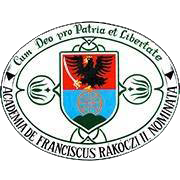Please use this identifier to cite or link to this item:
https://dspace.kmf.uz.ua/jspui/handle/123456789/1736| Title: | Német és magyar nyelvű idiómák kontrasztív vizsgálata |
| Other Titles: | Constructive analysis of German and Hungarian idioms |
| Authors: | Lechner Ilona Ilona Lekhner Лехнер Ілона |
| Keywords: | kognitív nyelvészet;fogalmi metafora;az ’idő’ fogalma;idióma;figuratív jelentés;cognitive linguistics;‘time’;idiom;figurative meaning;когнітивна лінгвістика;концептуальна метафора;‘час’;ідіома;переносне значення |
| Issue Date: | 2021 |
| Publisher: | ВПЦ «Візаві» |
| Type: | dc.type.researchArticle |
| Citation: | Lechner Ilona: Német és magyar nyelvű idiómák kontrasztív vizsgálata. In Філологічний часопис. 2021. Випуск 1 (17). с. 58-66. |
| Series/Report no.: | ;Випуск 1 (17) |
| Abstract: | Abstract. The subject of the study is the examination of figurative meaning in Hungarian and German. Thus, in the present study, I present the interpretation of figurative meaning within the theoretical framework of cognitive linguistics by analysing idiomatic expressions in Hungarian and German on the example of the concept of ‘time’. In this contrastive research, I primarily look for the answer to how ordinary people use cognitive tools to grasp intangible abstract concepts such as ‘time’ and what connections can be observed between literal and figurative meaning.
The examined Hungarian and German idioms are the linguistic manifestations of the conceptual metaphor time is money (valuable resource). The study aims to support the assumption that in any language an abstract meaning can only be expressed with a figurative meaning.
Time is an abstract concept that is present in the everyday language use of all people. The expressions time passes, the time is here, my time has come, it takes a lot of time – to mention just a few, have become so conventionalized in our language that we take their meaning literally. Nonetheless, they are based on conventional conceptual metaphors that we use to make the concept of time more tangible to ourselves. The linguistic manifestations of these conceptual metaphors are created and understood without any mental strain.
In the first stage of the research, I searched for possible German equivalents of Hungarian expressions, and then I used Internet search engines and idiom and monolingual dictionaries to select the most frequently used equivalent in German. As a next step, I examined 1) the word form, 2) the literal meaning, 3) the figurative meaning, and 4) the conceptual metaphor of idioms in both languages, which were either been identical or different. Because they are different languages, the word forms are inherently different. At the end of the study, I compared the formed patterns from which I drew conclusions, which support that figurative meaning is figurative in another language as well. A tanulmány tárgya a figuratív jelentés vizsgálata a magyar és a német nyelvben. A kutatás elméleti keretét a kognitív nyelvészeti jelentésfelfogás szolgáltatja, mely szerint az absztrakt jelentés mindig figuratív módon jut kifejezésre egy másik nyelvben. A kutatás során olyan magyar és német nyelvű idiómákat elemzünk, amelyek az idő pénz (értékes erőforrás) fogalmi metafora nyelvi manifesztációi. A vizsgálat arra irányul, hogy alátámasszuk a feltételezést, mely szerint bármely nyelvben az elvont jelentés csak átvitt (figuratív) jelentéssel fejezhető ki. Резюме. Предметом дослідження є аналіз образного значення в угорській та німецькій мовах. У дослідженні з позицій когнітивної лінгвістики на прикладі поняття «час» представлено інтерпретацію переносного значення в ідіоматичних висловах угорської та німецької мов. У ході контрастивного дослідження шукали відповіді на те, які співвідношення можна спостерігати між прямим і переносним значенням. Проаналізовані угорські та німецькі ідіоми є мовними проявами концептуальної метафори ГРОШІ – ЧАС (ЦІННИЙ РЕСУРС). Дослідження має на меті обґрунтувати припущення, що в будь-якій мові абстрактне значення може бути виражене лише за допомогою переносного значення. На першому етапі дослідження ми шукали можливі німецькі еквіваленти угорських виразів, відтак використовували пошукові системи в Інтернеті, а також одномовні словники та словники ідіом, щоб обрати найчастіше вживаний у німецькій мові вислів. На наступному етапі ми розглянули 1) форму, 2) пряме значення, 3) переносне значення, 4) концептуальну метафору ідіом в обох мовах, що могли бути однаковими або різними. Оскільки це різні мови, форми слів, очевидно, також різні. Зіставлено сформовані зразки, на основі яких зроблено висновки, що підтверджують те, що переносне значення є образним і в іншій мові. |
| URI: | http://dspace.kmf.uz.ua:8080/jspui/handle/123456789/1736 |
| ISSN: | 2415-8828 (Print) 2664-4495 (Online) |
| metadata.dc.rights.uri: | http://creativecommons.org/licenses/by-nc-nd/3.0/us/ |
| Appears in Collections: | Lechner Ilona |
Files in This Item:
| File | Description | Size | Format | |
|---|---|---|---|---|
| Lechner_I_Nemet_es_magyar_nyelvu_idiomak_kontrasztiv_vizsgalata_2022.pdf | Lechner Ilona: Német és magyar nyelvű idiómák kontrasztív vizsgálata. In Філологічний часопис. 2021. Випуск 1 (17). с. 58-66. | 1.14 MB | Adobe PDF | View/Open |
This item is licensed under a Creative Commons License





